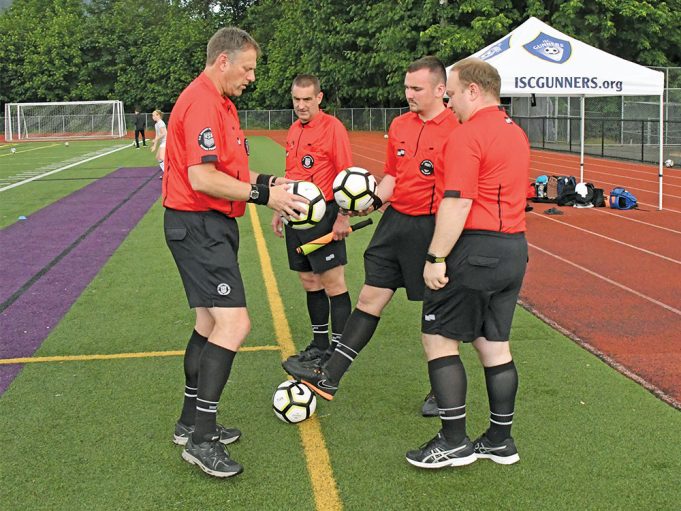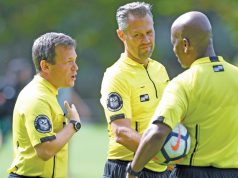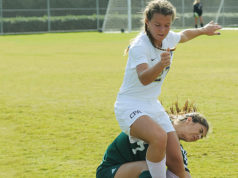I have always maintained that you had to be smart to play and referee soccer. A player shook this belief a bit by jumping for a high ball while leading with his forearm and, as a result, hitting the opposing player in the side of the head. The referee also shook my belief by displaying only the yellow card.
The referee said something to him at the time, probably along the lines of, “You were lucky I am in a good mood.” About 15 minutes later, the same player did almost exactly the same thing. The opposing player was out-jumping him, but was receiving a red card for control of the ball at midfield worth the risk?
The referee called the foul but did not show a card. The players took this as a license to take cheap shots, and what was already a rough game went downhill. A stronger punishment the first time would probably have prevented the second elbow.
This is a very easy red card for the referee. You have already said that this foul deserves a yellow card. If you don’t show the second it will be assumed you don’t have the courage to send the player off. The players might push you to show where your spot for a red card is.
Be aware some players may actually “want” to be carded
There are times when it makes sense for a player and his or her team to get a card, and we need to be aware of those critical points so we can deal with them when they come up. In the first half of a lower-division professional game, goalkeeper B1 was knocked down with the attackers making an attempt to appear they were merely playing the ball.
At the first opportunity in the second half, goalkeeper A1 was on his back. Knocking down the goalkeeper is a method of intimidation frequently used though it doesn’t always work. It took me some time to convince the referee that these matters were related. If something was done the first time, the second would not occur.
The reason for the second collision was that the referee did not deal with the first one. Since the referee did not do anything, the players decided they needed to take care of it themselves.
I was at a Women’s World Cup match in Washington, D.C., with the United States playing Germany. In the first half, Mia Hamm was taken down with a hard but probably fair tackle. Later Michelle Akers took down a German player very hard as if to say, “We can do that too, plus something extra.” Akers was shown the yellow card.
The initial tackle on Hamm made the game highlights video and it was stated that it was a fair tackle. That was the official view. The contact was in the penalty area and the referee surely did not want to give a PK even if the tackle was overly hard. The referee could have gone over and talked to the German opponent, thus making everyone believe she had taken care of it.
In a U19 state championship match A6 took B9 from behind. The referee called the foul but did nothing more. In the next few minutes, three team A players were taken down from behind with fouls called but nothing more. I am not sure why it took three. Two would have made the point. Team B having made its point, both teams decided to try to win the game. In a match of less importance with less mature and focused players, it is probable that matters would have gotten much worse.
The most common reason for an intentional foul is to break up the opponent’s attack. That includes obvious goal-scoring opportunities as well as efforts simply to break up an attack. The players know what they are doing and expect the referee to show the card.
The referee who does not show a card when the rules require it or when the players expect it is setting him or herself up for a long day. It shows the referee is not willing to do what is necessary to have the match played safely and within the rules. That’s not very smart.
What's Your Call? Leave a Comment:
Note: This article is archival in nature. Rules, interpretations, mechanics, philosophies and other information may or may not be correct for the current year.
This article is the copyright of ©Referee Enterprises, Inc., and may not be republished in whole or in part online, in print or in any capacity without expressed written permission from Referee. The article is made available for educational use by individuals.


















